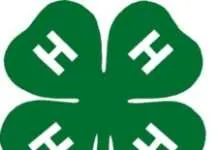Researchers look at effect of Konza Prairie fires on snakes
MANHATTAN, Kan. – A study on the impact of prescribed burns on the Konza Prairie showed that fire has minimal effect on the state’s snake populations, especially when there are adjacent unburned areas.
Charlie Lee, a retired wildlife specialist with K-State Research and Extension, said the researchers trapped snakes before and after prescribed burns in the spring (May through June) and fall (August through October) to determine the effects of prairie fires on reptile numbers.
“We know in woodland situations, the effects really depend upon the changes to the habitat,” Lee said. “In those wooded areas, when the fire is of high enough temperature and frequent enough to reduce canopy cover, it can (negatively) effect reptile and amphibian populations.”
However, he added that most woodland fires are not at a high enough temperature to change habitat conditions too much, so the impact to reptiles is “virtually non-existent.”
“What’s been done in prairie situations shows that fire effects do impact arthropod numbers, primarily grasshoppers,” Lee said. “We know that fire changes the abundance of small mammals – it often increases small mammal populations. It can have either a positive or a negative impact on birds.”
In the Konza Prairie study, researchers trapped a total of 92 snakes of six different species during the two phases of the study (spring and fall). The species caught were the North American Racer, Great Plains Rat snake, King snake, Milk snake Gopher snake and the common garter snake.
Lee said the researchers actually found all six species in burned areas, and just five of those same species in the unburned areas, though there were just 32 snakes on the burned prairie compared to 60 on the unburned prairie.
The North American Racer and common garter snake composed about 79% of all the snakes that were captured.
“The research suggests that snakes could have a short-term negative response to spring burning, but they could quickly re-appear on burned areas of the prairie when there are (adjacent) areas that are unburned,” Lee said. “This suggests that the unburned areas are an important element for prescribed burns if we’re concerned about snake populations.”
K State Research and Extension is a short name for the Kansas State University Agricultural Experiment Station and Cooperative Extension Service, a program designed to generate and distribute useful knowledge for the well being of Kansans. Supported by county, state, federal and private funds, the program has county extension offices, experiment fields, area extension offices and regional research centers statewide. Its headquarters is on the K State campus in Manhattan. For more information, visit www.ksre.ksu.edu. K-State Research and Extension is an equal opportunity provider and employer.
Story by:
Pat Melgares
785-532-1160
melgares@ksu.edu
For more information:
Charlie Lee
785-532-5734
clee@ksu.edu





